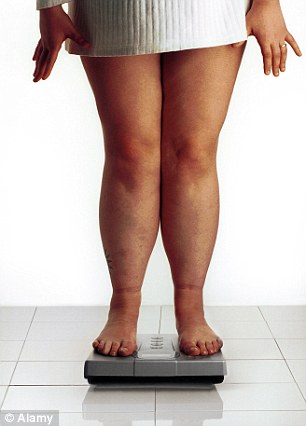Durban - South Africa has an obesity epidemic on its hands - and it is women who are most at risk to develop diseases associated with carrying too much weight.
Researchers at Priceless (Priority Cost Effective Lessons for System Strengthening South Africa) SA, a research unit hosted by Wits University School of Public Health, have warned that obesity-related diseases now rival HIV/Aids as the biggest killer of South Africans.
According to Professor Karen Hofman, director at Priceless, 13.8 percent of deaths in South Africa are caused by Aids complications, while 13.1 percent of deaths are now caused by “non-communicative lifestyle diseases” such as heart disease and diabetes.
“South Africa has the highest prevalence of obesity in sub-Saharan Africa,” Hofman said.
According to the 2012 SA National Health and Nutrition Examination, 39 percent of women are obese, compared to 11 percent of the male population.
KZN Health MEC Sibongiseni Dhlomo said: “Being obese is detrimental to good health.”
Dhlomo said the country faced a danger as current efforts were concentrated on fighting HIV and tuberculosis, while non-communicable diseases were the new threat.
“Already in this country some 66 percent of women and 33 percent of men are overweight and our health care facilities are observing an increase of relatively young people suffering from high blood pressure, coronary heart diseases, diabetes and several types of cancer,” he said.
KZN MEC for Arts, Culture, Sport and Recreation Ntombikayise Sibhidla-Saphetha said the government was concerned about the scourge of obesity in the country.
“A study conducted last year by the University of North West School of Biokinetics, Recreation and Sport Science, revealed that nearly two-thirds of the South African population is overweight.
“The study further revealed that 70 percent of women are overweight. It also highlighted the fact that South African children have the third-highest obesity rate in the world,” she said.
Combating obesity was one of the department’s aims because obesity contributed significantly to the decline of the country’s health status, Sibhidla-Saphetha said.
To help residents get healthy, the department would be investing R41.3 million in two core programmes that promote active and healthy lifestyles.
“Over the last four years, the department has installed 44 outdoor gyms in local municipalities. In 2016/17, the department will install a further 11 outdoor gyms,” she said.
“Fitness instructors trained by the department will service the centres with daily programmes of aerobics, jogging, walking, nutritional tips as well as assistance on the use of the gym equipment,” she said.
Shane Norris, researcher professor at Wits who works for the African Centre on Obesity Prevention, has spent 26 years studying the root causes of obesity.
Researchers at Priceless (Priority Cost Effective Lessons for System Strengthening South Africa) SA, a research unit hosted by Wits University School of Public Health, have warned that obesity-related diseases now rival HIV/Aids as the biggest killer of South Africans.
According to Professor Karen Hofman, director at Priceless, 13.8 percent of deaths in South Africa are caused by Aids complications, while 13.1 percent of deaths are now caused by “non-communicative lifestyle diseases” such as heart disease and diabetes.
“South Africa has the highest prevalence of obesity in sub-Saharan Africa,” Hofman said.
According to the 2012 SA National Health and Nutrition Examination, 39 percent of women are obese, compared to 11 percent of the male population.
KZN Health MEC Sibongiseni Dhlomo said: “Being obese is detrimental to good health.”
Dhlomo said the country faced a danger as current efforts were concentrated on fighting HIV and tuberculosis, while non-communicable diseases were the new threat.
“Already in this country some 66 percent of women and 33 percent of men are overweight and our health care facilities are observing an increase of relatively young people suffering from high blood pressure, coronary heart diseases, diabetes and several types of cancer,” he said.
KZN MEC for Arts, Culture, Sport and Recreation Ntombikayise Sibhidla-Saphetha said the government was concerned about the scourge of obesity in the country.
“A study conducted last year by the University of North West School of Biokinetics, Recreation and Sport Science, revealed that nearly two-thirds of the South African population is overweight.
“The study further revealed that 70 percent of women are overweight. It also highlighted the fact that South African children have the third-highest obesity rate in the world,” she said.
Combating obesity was one of the department’s aims because obesity contributed significantly to the decline of the country’s health status, Sibhidla-Saphetha said.
To help residents get healthy, the department would be investing R41.3 million in two core programmes that promote active and healthy lifestyles.
“Over the last four years, the department has installed 44 outdoor gyms in local municipalities. In 2016/17, the department will install a further 11 outdoor gyms,” she said.
“Fitness instructors trained by the department will service the centres with daily programmes of aerobics, jogging, walking, nutritional tips as well as assistance on the use of the gym equipment,” she said.
Shane Norris, researcher professor at Wits who works for the African Centre on Obesity Prevention, has spent 26 years studying the root causes of obesity.














